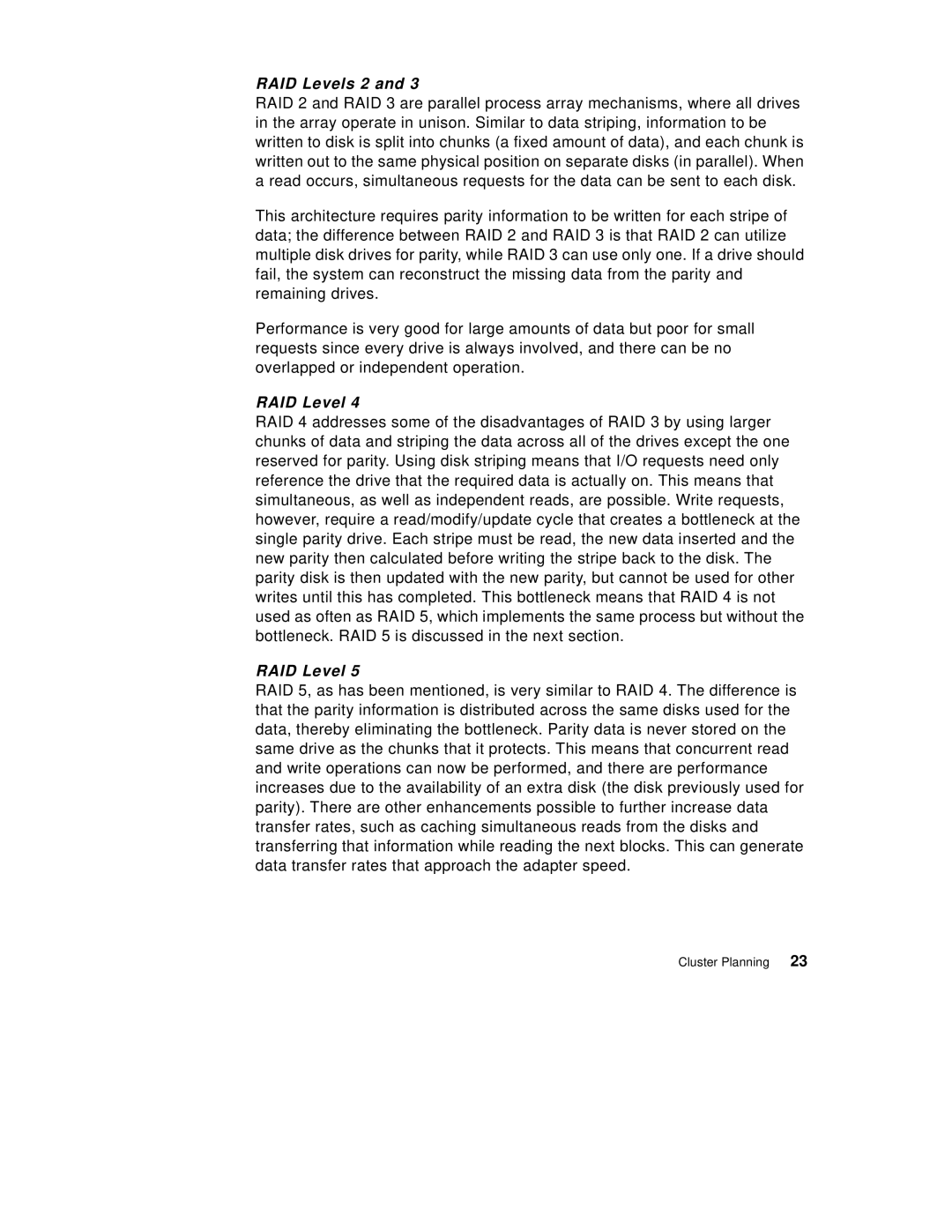RAID Levels 2 and 3
RAID 2 and RAID 3 are parallel process array mechanisms, where all drives in the array operate in unison. Similar to data striping, information to be written to disk is split into chunks (a fixed amount of data), and each chunk is written out to the same physical position on separate disks (in parallel). When a read occurs, simultaneous requests for the data can be sent to each disk.
This architecture requires parity information to be written for each stripe of data; the difference between RAID 2 and RAID 3 is that RAID 2 can utilize multiple disk drives for parity, while RAID 3 can use only one. If a drive should fail, the system can reconstruct the missing data from the parity and remaining drives.
Performance is very good for large amounts of data but poor for small requests since every drive is always involved, and there can be no overlapped or independent operation.
RAID Level 4
RAID 4 addresses some of the disadvantages of RAID 3 by using larger chunks of data and striping the data across all of the drives except the one reserved for parity. Using disk striping means that I/O requests need only reference the drive that the required data is actually on. This means that simultaneous, as well as independent reads, are possible. Write requests, however, require a read/modify/update cycle that creates a bottleneck at the single parity drive. Each stripe must be read, the new data inserted and the new parity then calculated before writing the stripe back to the disk. The parity disk is then updated with the new parity, but cannot be used for other writes until this has completed. This bottleneck means that RAID 4 is not used as often as RAID 5, which implements the same process but without the bottleneck. RAID 5 is discussed in the next section.
RAID Level 5
RAID 5, as has been mentioned, is very similar to RAID 4. The difference is that the parity information is distributed across the same disks used for the data, thereby eliminating the bottleneck. Parity data is never stored on the same drive as the chunks that it protects. This means that concurrent read and write operations can now be performed, and there are performance increases due to the availability of an extra disk (the disk previously used for parity). There are other enhancements possible to further increase data transfer rates, such as caching simultaneous reads from the disks and transferring that information while reading the next blocks. This can generate data transfer rates that approach the adapter speed.
